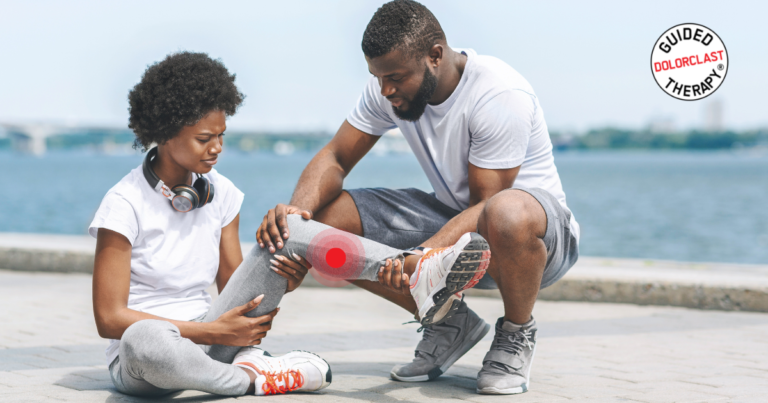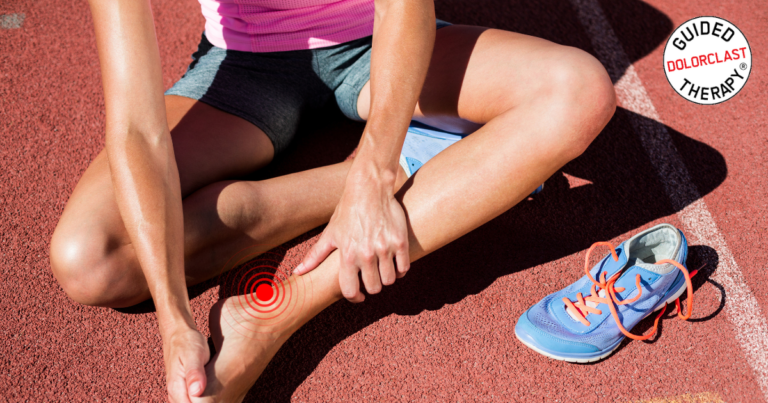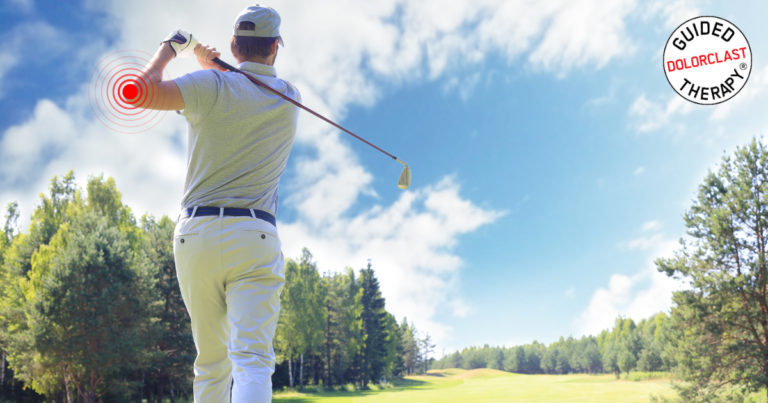Reference:
Rompe JD, Furia JP, Maffulli N
"Eccentric loading versus eccentric loading plus shock-wave treatment for midportion Achilles tendinopathy: a randomized controlled trial"
J Bone Joint Surg Am 2009;37:463-470
Background
Achilles tendinopathy (AT) is one of the most common tendon pathologies, accounting for up to 4% of visits to sports medicine clinics [1]. Despite the emergence of various new techniques for the management of tendinopathy, data concerning their efficacy often lack the scientific component. Consequently, details regarding the most effective treatment and therapeutic decision-making process remain inconclusive. Given that numerous randomized controlled trials have demonstrated comparable effectiveness of a standardized eccentric loading training and repetitive low-energy shock-wave treatment (SWT) in patients with chronic mid-portion Achilles tendinopathy, this randomized controlled trial aimed to estimate whether a combined approach might produce even better results.
Methods
All patients had an established diagnosis of chronic mid-portion tendinopathy of the Achilles tendon for at least 6 months before treatment and a history of unsuccessful nonoperative management that involved: peritendinous local injections, nonsteroidal anti-inflammatory drugs, and physiotherapy. The study cohort consisted of two carefully selected groups:
- Eccentric loading group (N=34) - control group involved patients with an established diagnosis of mid-portion tendinopathy of the Achilles tendon who underwent eccentric training. Patients performed 3 sets of 15 repetitions with 1 minute of rest between the sets twice a day 7 days per week for 12 weeks.
- Eccentric loading with repetitive low-energy shock-wave therapy (SWT) group (N=34). Patients with an established diagnosis of mid-portion tendinopathy of the Achilles tendon underwent an identical eccentric training regimen and, after 4 weeks, SWT.
Repetitive low-energy shock-wave therapy consisted of 3 sessions at weekly intervals. DolorClast® Radial Shock Waves device (Electro Medical Systems, Nyon, Switzerland) was used for shock wave treatment. Each session involved 2000 impulses with a pressure of 3 bar (equals an energy flux density of 0.1 mJ/mm2). The treatment frequency was 8 pulses per second. Following the principle of clinical focusing, the authors have treated the area of maximal tenderness, beginning at the point of maximum pain level. No local anesthesia was applied.
Outcomes
All patients underwent pretreatment evaluation. The clinical outcomes were determined by:
- the VISA-A questionnaire was used to evaluate clinical severity,
- 6-point Likert scale was used for general assessment,
- the 11-point numerical rating scale was used for pain assessment.
Results
In order to allow time for collagen turnover and remodeling, observer-blinded outcome assessments were performed 16 weeks after baseline assessment.
VISA-A Score
An increase in VISA-A Score has been demonstrated in both groups, from 50 to 73 points in group 1 (eccentric loading) and from 51 to 87 points in group 2 (eccentric loading with shock-wave treatment).
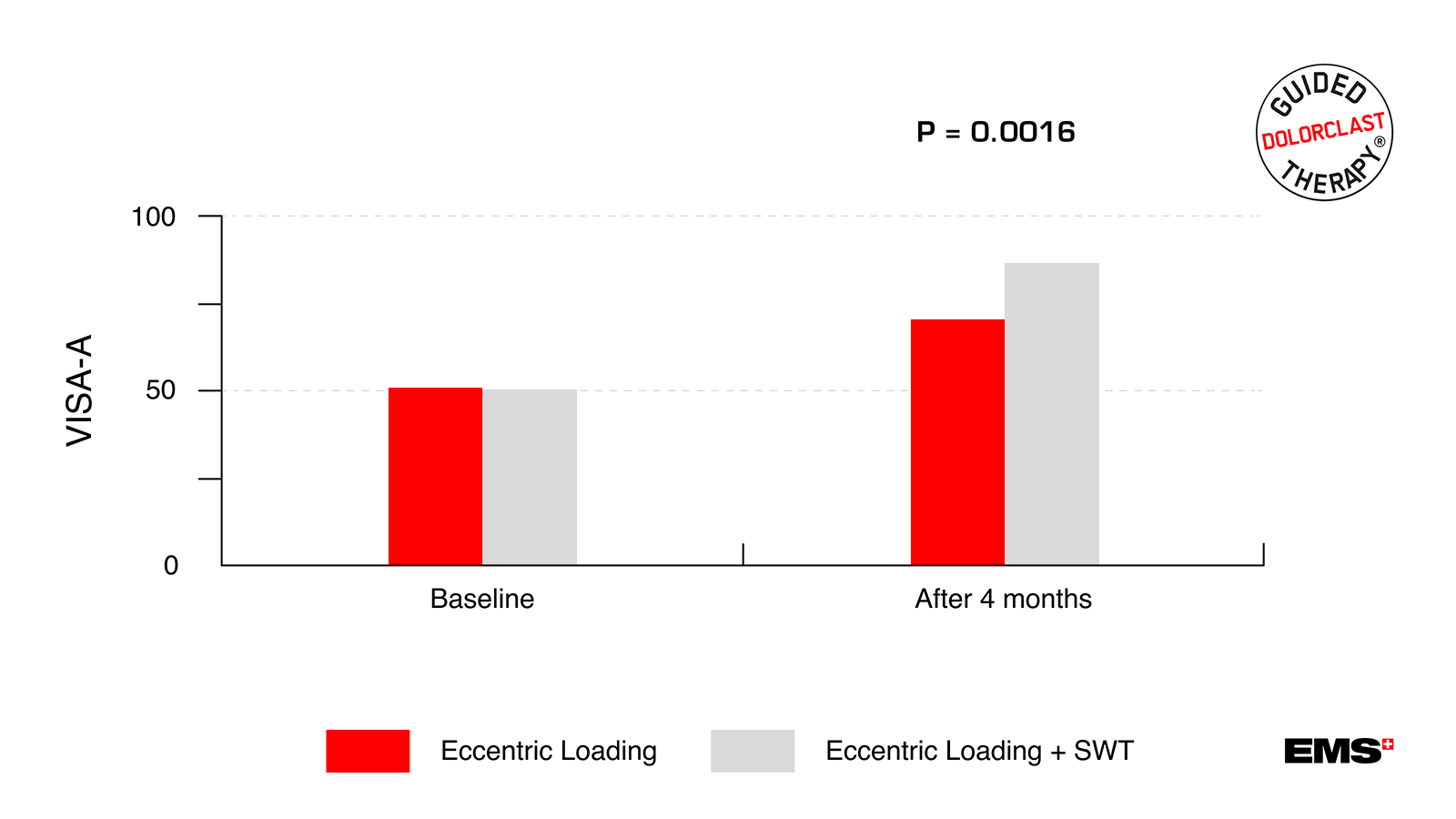
General and Pain Assessment
A Likert scale of 1 (defined as complete recovery) or 2 points (defined as “much improved'') was reported in 56% of patients in group 1 and as much as 82% of patients in group 2. A pain rating decrease has been demonstrated in both groups, from 7 to 4 points in group 1 and from 7 to 2 points in group 2.
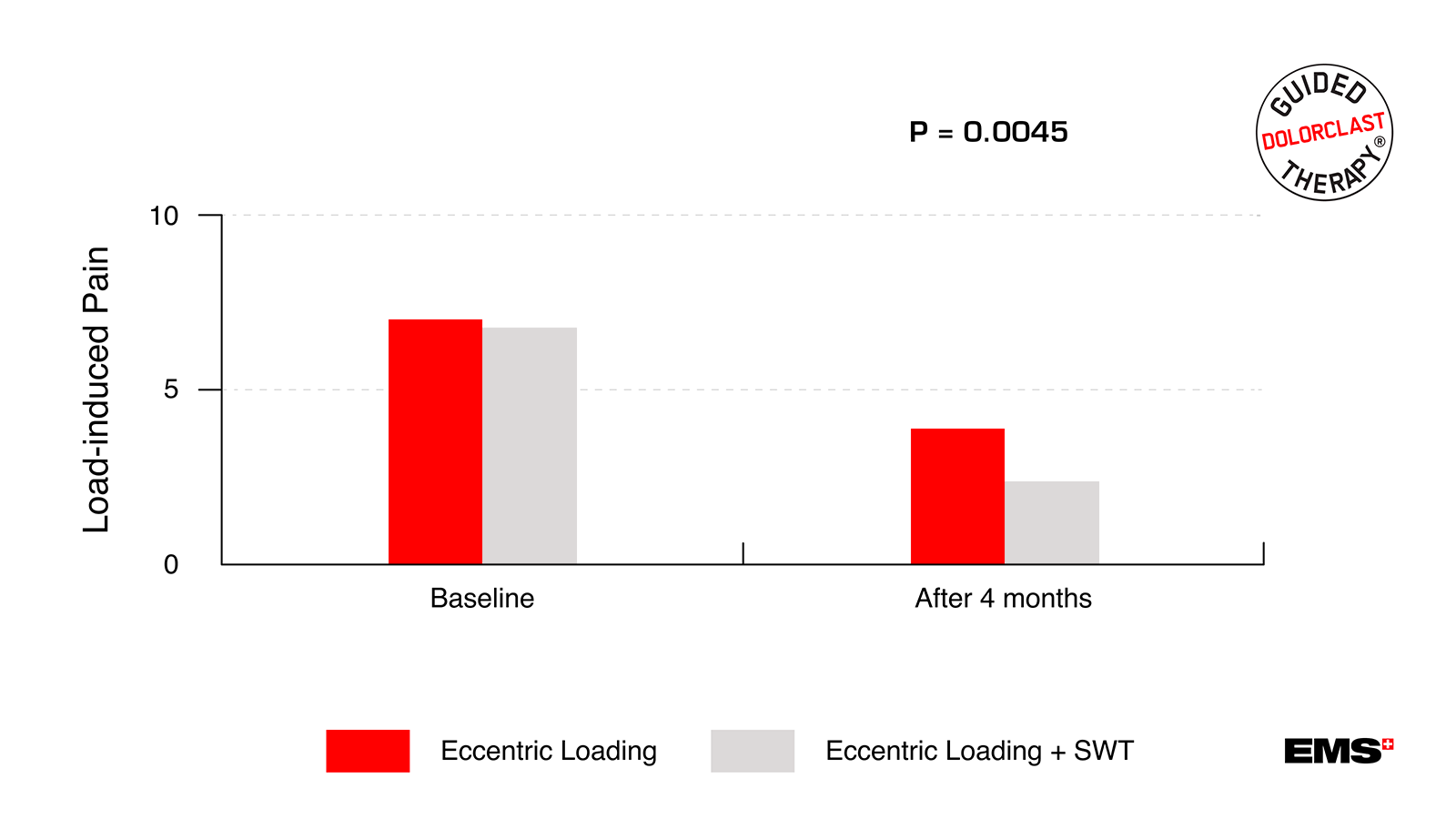
Side Effects
The authors reported a zero occurrence of serious complications. All patients who underwent SWT experienced transient reddening of the skin after low-energy SWT but no bruising. There were no device-related complications. Although patients reported an ache in the calf due to eccentric loading, there was no interruption of the eccentric loading training regimen. Throughout the study period, there was no incidence of Achilles tendon rupture.
Eccentric loading alone was significantly less effective when compared with a combination of eccentric loading and repetitive low-energy shock-wave treatment. Combined treatment allows to substantially alleviate pain.
Conclusion
This study has conclusively proven that combined treatment of eccentric loading and repetitive low-energy shock-wave treatment allows to significantly reduce pain and improve function. Shock wave therapy constitutes a highly valuable addition to eccentric loading as it stimulates soft tissue healing and inhibition of pain receptors. Patients wishing for quick and effective relief of chronic symptoms together with a return to full activity should opt for the combined treatment.
References:
- McCormack JR. The management of mid-portion achilles tendinopathy with astym® and eccentric exercise: a case report. Int J Sports Phys Ther. 2012;7(6):672-677.
- van Sterkenburg MN et al. Mid-portion Achilles tendinopathy: why painful? An evidence-based philosophy. Knee Surg Sports Traumatol Arthrosc. 2011;19(8):1367-1375.
- Klatte-Schulz F et al. Different Achilles Tendon Pathologies Show Distinct Histological and Molecular Characteristics. Int J Mol Sci. 2018;19(2):404. Published 2018 Jan 30.
- Ackermann PW et al. Tendinopathy in sport. Sports Health. 2012;4(3):193-201.
- Alfredson H et al. A treatment algorithm for managing Achilles tendinopathy: new treatment options. Br J Sports Med. 2007;41(4):211‐216
Full Study: https://pubmed.ncbi.nlm.nih.gov/19088057/
Would you like to learn more about Achilles Tendinopathy? Visit the indication page and discover how can you use Guided DolorClast® Therapy approach when treating patients!


